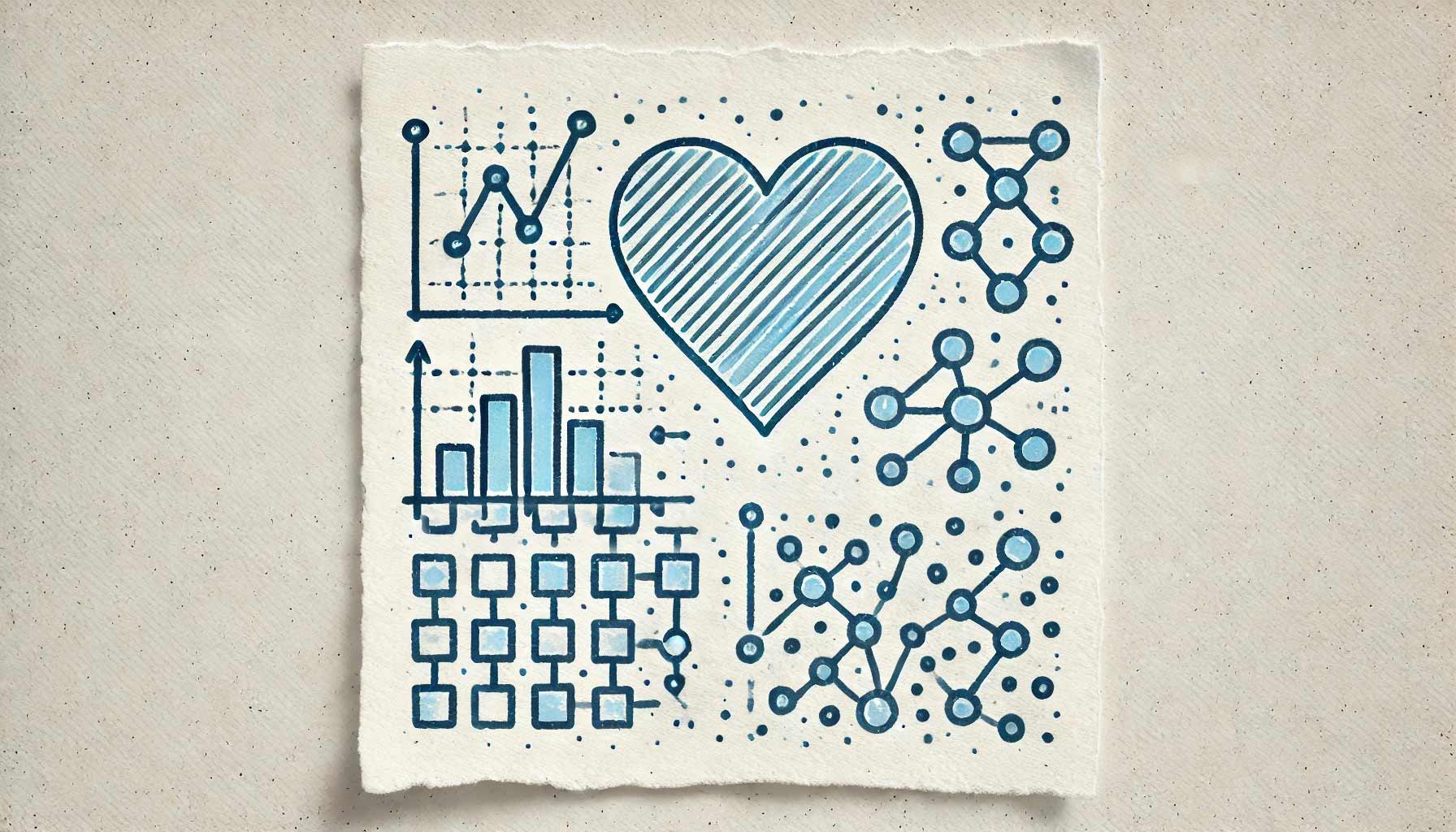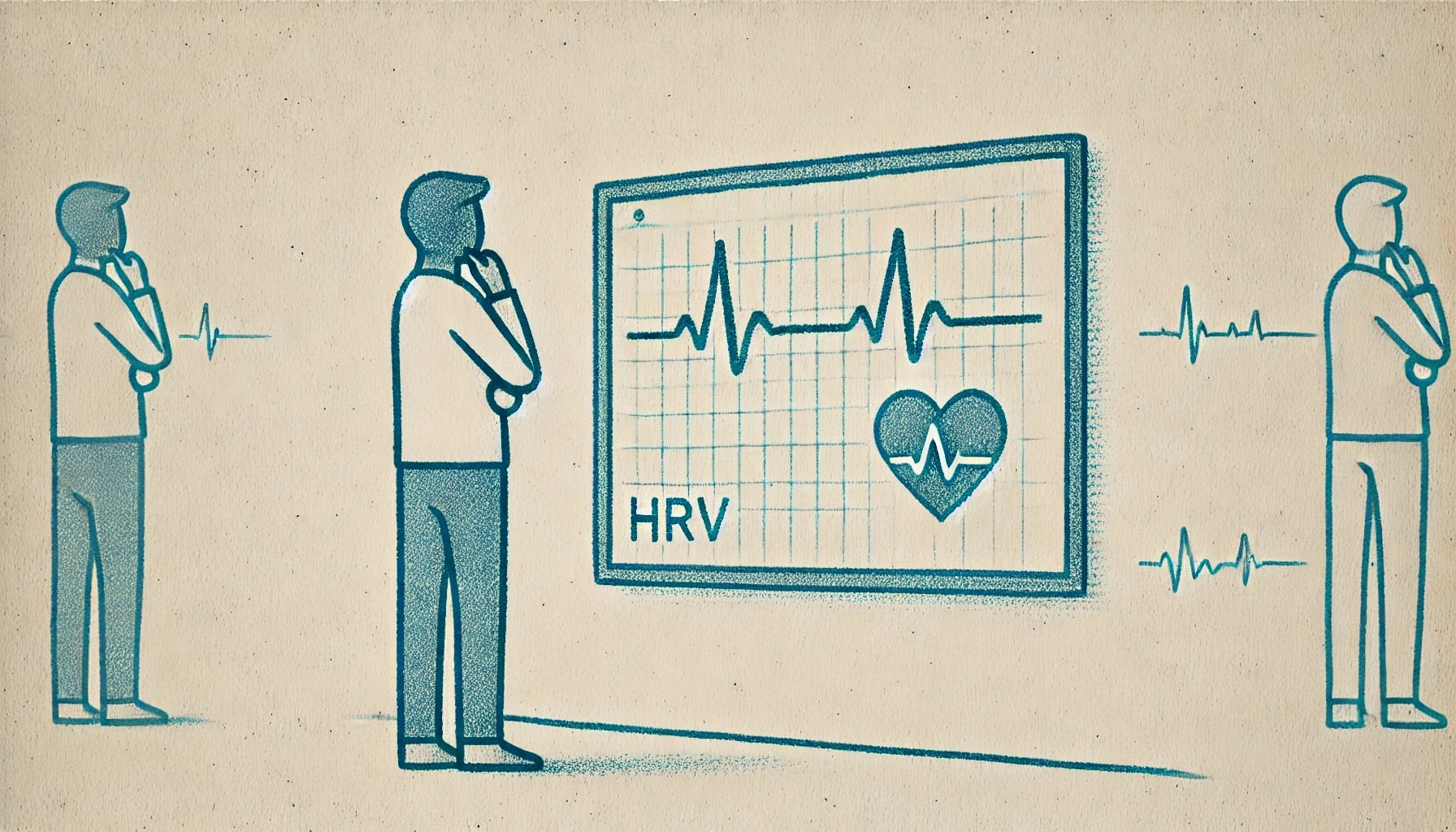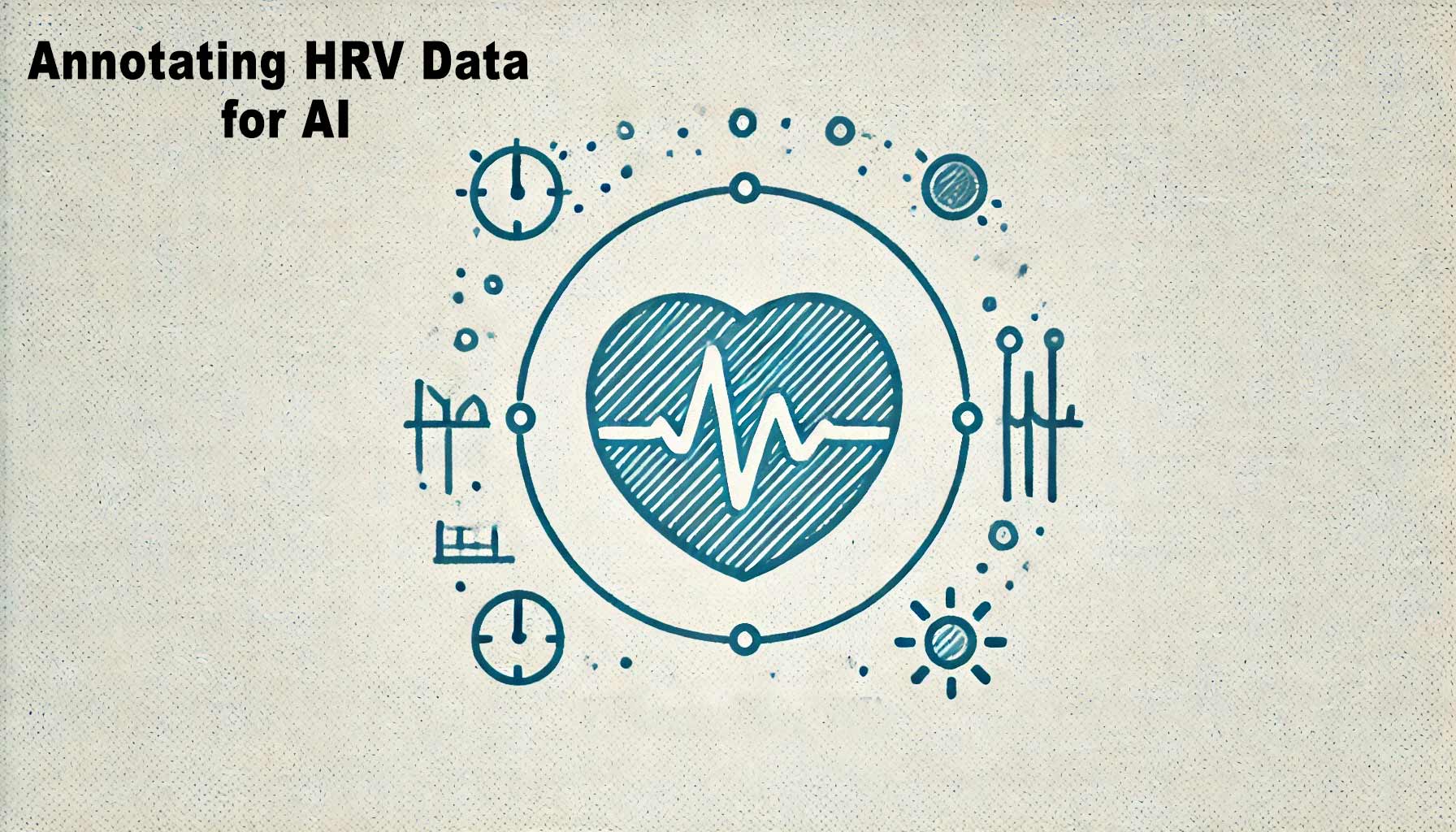I. Introduction
The Role of Accurate Annotation in HRV Studies
Accurate data annotation is key for AI and machine learning applications in Heart Rate Variability (HRV) studies. Model performance depends heavily on the quality of these annotations, which allow the system to recognize patterns and predict outcomes related to cardiovascular health, stress, and more. Poorly annotated data can undermine even the most advanced AI models.
Comparing Manual, Automated, and Hybrid Annotation Techniques
This article looks at different techniques for annotating HRV data, from manual methods based on expert input to automated and semi-automated systems. Understanding these methods helps researchers choose the best approach to improve the reliability and relevance of their AI models.

II. Manual Annotation Techniques for HRV Data
A. Expert Annotations
Manual annotation involves experts carefully reviewing HRV data and labeling segments based on predefined criteria, such as identifying periods of stress, arrhythmias, or recovery after physical exertion. This method is valuable in clinical research settings where context and accuracy are important. Expert annotations are used to create high-quality labeled datasets that serve as gold standards for training AI models in recognizing specific patterns.
- Example: In a study on stress responses, clinical experts may manually label HRV data based on concurrent physiological measurements (e.g., cortisol levels) or self-reported stress levels. These labeled datasets can then be used to train AI models that predict stress states from HRV data alone, providing a non-invasive tool for stress monitoring.
B. Event-Based Annotations
Event-based annotation focuses on labeling HRV data around specific events like physical activities, sleep stages, or emotional stressors. This method often involves integrating HRV data with external data sources, like accelerometers for activity tracking or polysomnography for sleep monitoring. Researchers annotate HRV segments corresponding to these events, creating labeled datasets for training models to predict or classify similar events in new data.
- Example: In exercise physiology studies, researchers might use HRV data synchronized with accelerometer readings to label periods of walking, running, or resting. These event-based annotations allow AI models to learn how different activities affect HRV, potentially predicting recovery times or identifying overtraining in athletes.
C. Pros and Cons of Manual Annotation
- Advantages: Manual annotation provides high accuracy and contextual relevance, as it leverages human expertise to label data based on comprehensive understanding and specific criteria. This is important in medical and clinical settings, where the stakes for accuracy are high.
- Disadvantages: Manual annotation is time-consuming and labor-intensive. It requires significant human resources and expertise, which can lead to variability and potential bias if different annotators use slightly different criteria. Additionally, it becomes impractical for large datasets, making scalability a significant concern.
By using careful manual annotation strategies and robust validation, researchers can create high-quality datasets essential for reliable AI models in HRV analysis. However, manual annotation is time-consuming. Automated and semi-automated methods, discussed next, can scale the process while preserving accuracy.

III. Automated Annotation Techniques for HRV Data
Automated annotation techniques use algorithms, pre-trained models, and synchronized sensor data to label HRV data with minimal human intervention. These methods are particularly useful when working with large datasets where manual annotation is impractical. Automated techniques can rapidly generate labeled datasets, ideal for scaling up research and providing consistent annotations.
A. Synchronized Multi-Sensor Data Annotation
Synchronized multi-sensor data annotation involves combining HRV data with data from other sensors – such as accelerometers, ECGs, or stress monitors – to automatically label HRV segments. This method leverages the fact that different physiological and contextual signals can be recorded simultaneously, allowing for cross-referencing to identify specific events or states.
- Example: A study using a wearable device that records HRV, accelerometry, and ECG data can automatically label HRV segments based on physical activity types (e.g., sitting, walking, running) detected by the accelerometer. If the accelerometer data indicates “walking,” the corresponding HRV data segment is labeled as “walking,” allowing AI models to learn how walking affects HRV.
B. Machine Learning-Based Annotation Tools
Machine learning-based annotation tools employ pre-trained AI models or algorithms to automate the annotation process. These tools use techniques like clustering, anomaly detection, or pattern recognition to identify and label HRV data segments based on learned patterns from previously labeled data.
- Example: An unsupervised learning model like K-means clustering can be applied to HRV data to identify natural groupings that correspond to different physiological states, such as rest, stress, or sleep. Once these clusters are established, they can serve as automated labels for similar segments in new HRV datasets, reducing the need for manual input.
C. Pros and Cons of Automated Annotation
- Advantages: Automated annotation is scalable and efficient, making it ideal for large datasets where manual annotation would be too time-consuming. It can quickly process vast amounts of data with consistent and objective labeling without human error or fatigue. It is particularly valuable in longitudinal studies or real-time monitoring where ongoing annotation is needed.
- Disadvantages: Automated methods often require a well-labeled initial dataset to train the models, which can be a limitation if such data is not available. Moreover, without human validation, there is a risk of inaccuracies, especially in complex cases where the model may misinterpret subtle nuances. Therefore, automated annotations are often best used in conjunction with manual review or semi-automated methods.
Automated annotation techniques can greatly enhance the efficiency of HRV research by providing rapid and reliable labels. However, combining these methods with expert oversight or AI-assisted tools can help mitigate the risk of errors and improve the quality of annotations.

IV. Semi-Automated Annotation Techniques for HRV Data
Semi-automated annotation techniques blend the strengths of both manual and automated approaches. These methods involve AI tools that suggest labels based on automated processes, which are then reviewed, corrected, or refined by human experts. This collaborative approach helps balance scalability with accuracy, reducing the workload for human annotators while maintaining high data quality.
A. AI-Assisted Annotation Tools
AI-assisted annotation tools provide an interface where AI suggests labels for HRV data based on pre-defined models, and human experts validate or adjust these labels. This process is iterative, allowing the AI to learn from the corrections made by experts, thus improving its accuracy over time.
- Example: In a study focused on detecting stress in HRV data, an AI tool could pre-label segments that it identifies as “high stress.” Human experts then review these pre-labels, making adjustments where necessary. Over time, the AI model becomes more refined, reducing the amount of manual correction needed.
B. Active Learning Approaches
Active learning is a machine learning approach where the algorithm identifies which data points would benefit most from human annotation. The model actively queries the experts to label these specific data points, allowing the AI to learn more efficiently and improve its performance rapidly.
- Example: When identifying abnormal HRV patterns, an active learning system might flag ambiguous data segments for expert review. By focusing human effort on the most challenging cases, active learning can help train more robust models with fewer labeled examples, optimizing both time and accuracy.
C. Pros and Cons of Semi-Automated Annotation
- Advantages: Semi-automated annotation combines the scalability and speed of automated methods with the accuracy and contextual understanding of human expertise. This method significantly reduces the manual workload while ensuring high-quality annotations. It also allows for continuous improvement of AI models through expert feedback.
- Disadvantages: Semi-automated methods still require ongoing human input, which can be resource-intensive. There is also a risk of human bias influencing the AI if the feedback is inconsistent or subjective. Careful planning and consistent criteria for annotation are needed to ensure the effectiveness of these methods.
Semi-automated annotation offers a balance of efficiency and accuracy, ideal for complex HRV datasets requiring expert input but scalable processing. The final section will cover how to select the best tools and techniques for different research contexts.

V. Choosing the Right Tool for Your Research
Selecting the appropriate tool for annotating HRV data is critical to the success of AI-driven analysis. The choice depends on several factors, including the specific research goals, data volume, complexity of the HRV data, required annotation accuracy, and available resources. Below are some key criteria to consider when choosing an annotation tool for HRV research.
A. Ease of Use and User Interface
Tools should have an intuitive user interface that allows researchers and annotators to easily navigate, view, and label HRV data. A user-friendly platform reduces the learning curve and helps prevent errors, especially in studies where multiple researchers or annotators are involved.
- Consideration: Look for tools that offer customizable annotation workflows, easy-to-understand visualization features for HRV data, and efficient navigation options for labeling large datasets.
B. Integration Capabilities with Multimodal Data
Many HRV studies involve integrating HRV data with other physiological or contextual data sources, such as accelerometers, ECGs, or environmental sensors. The chosen annotation tool should support seamless integration with these data types to enable synchronized and comprehensive analysis.
- Consideration: Choose tools that can handle multiple data formats and provide features for synchronizing data streams, aligning time-series data, and merging data from different sensors.
C. Scalability and Performance
For studies involving large datasets or long-term monitoring, scalability is crucial. Annotation tools should be capable of handling large volumes of HRV data without compromising performance. This includes fast loading times, efficient data processing, and the ability to manage high-dimensional data.
- Consideration: Opt for tools that offer batch processing features, support cloud-based storage and computing, and allow for parallel processing to handle large datasets efficiently.
D. Flexibility and Customization
Different research projects may have unique annotation needs, such as specific labeling criteria, custom event definitions, or tailored machine learning models. Annotation tools that offer flexibility and customization options allow researchers to adapt the software to their specific study requirements.
- Consideration: Look for tools that allow for the creation of custom labels, user-defined annotation rules, and the integration of custom algorithms or machine learning models for automated or semi-automated annotation.
E. Cost and Accessibility
The cost of annotation tools can vary widely, from free, open-source options to premium, proprietary software. Researchers should consider their budget constraints and the tool’s accessibility, including licensing requirements, support, and training resources.
- Consideration: Evaluate whether the cost aligns with the project’s budget and consider the availability of user support, documentation, and community forums that can assist with troubleshooting and optimizing the tool’s use.
F. Support for Collaboration and Quality Control
In larger studies or multi-center trials, collaboration among multiple researchers and annotators is often necessary. Annotation tools should support collaborative workflows, version control, and quality control features to ensure consistency and accuracy across annotations.
- Consideration: Choose tools that offer multi-user access, role-based permissions, audit trails, and built-in mechanisms for inter-rater reliability checks to maintain high annotation quality.
By considering these criteria, researchers can select an annotation tool that aligns with their specific needs, optimizing both the efficiency and quality of HRV data annotation for AI analysis.

VI. Conclusion
Effective data annotation is fundamental for leveraging AI in HRV research. Whether through manual, automated, or semi-automated techniques, selecting the right approach depends on the study’s goals, dataset size, and available resources.
- Manual annotation offers high accuracy but is resource-intensive, while automated methods provide scalability but may lack contextual accuracy.
- Semi-automated approaches combine the best of both, ensuring scalable yet reliable annotations.
Choosing the right tools and techniques for HRV data annotation can significantly impact the outcomes of AI-driven research. By carefully evaluating annotation needs, integration capabilities, and scalability, researchers can maximize the potential of their HRV studies, leading to more robust models and meaningful health insights.
Call to Action
📅 If you want to learn more about Fibion’s solution for measuring HRV, do not hesitate to book a video call with our expert Dr. Miriam Cabrita.

🔍 You may also discover our product portfolio on our website: Fibion SENS, Fibion Research, Fibion Vitals, Fibion Sleep, Fibion Emfit and Fibion Circadian, each with its unique set of features and applicability.
✨ For those interested in an in-depth look at the features and pricing across available heart rate variability (HRV) actigraphy tools, we invite you to explore our comprehensive comparison sheet. Click here for access.
Frequently asked questions about this topic:
Why is data annotation important in HRV research for AI? +
Accurate data annotation is crucial because it allows AI models to learn patterns and make predictions related to autonomic function, cardiovascular health, and stress. Without reliable annotations, AI models may fail to deliver meaningful results.
What are manual annotation techniques for HRV data? +
Manual annotation techniques involve experts reviewing HRV data to label segments based on predefined criteria, such as identifying stress periods or arrhythmias. This approach is highly accurate but time-consuming and resource-intensive.
How do automated annotation techniques work for HRV data? +
Automated annotation techniques use algorithms and pre-trained models to label HRV data with minimal human intervention. They are ideal for large datasets, offering speed and consistency but may require an initial well-labeled dataset for training.
What are the benefits of semi-automated annotation methods? +
Semi-automated methods combine AI tools that suggest labels with human expert validation, balancing scalability and accuracy. This approach reduces the manual workload while maintaining high data quality and allowing continuous model improvement.
How can I choose the right annotation tool for HRV data? +
Selecting the right tool depends on factors such as ease of use, integration capabilities with multimodal data, scalability, flexibility, cost, and support for collaboration. Consider the specific needs of your research to make the best choice.
What are the challenges of using automated annotation techniques? +
Automated techniques may produce inaccuracies without human validation, especially in complex cases. They also require a well-labeled initial dataset to train models, which can be a limitation if such data is not available.















